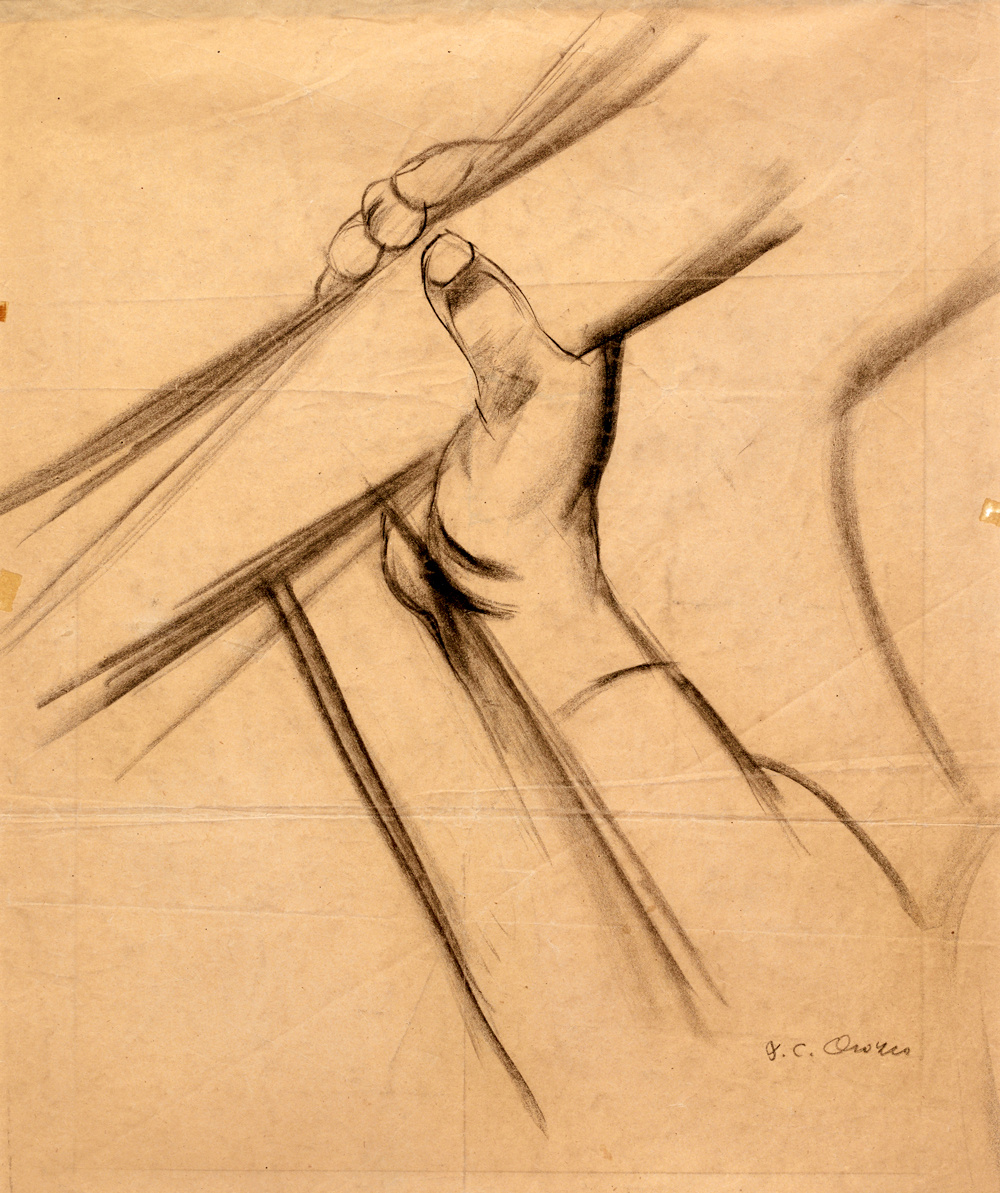Biography
Jose Clemente Orozco (1883 – 1949) first encountered art as a young child, when he would pass by an engraving shop on his way to and from school and watch the master printmaker José Guadalupe Posada at work in full view from the street. Fascinated by Posada’s famous cartoons, calaveras (skulls), and skeletons, Orozco began drawing figures and experimenting with colors. He later enrolled in evening drawing classes at the nearby Academia de San Carlos. At his family’s urging, however, Orozco studied agriculture as a teenager, then turned to architecture, honing his artistic skill as a draftsman. After the loss of his left hand in an accident and the death of his father, Orozco returned to San Carlos with a renewed dedication to pursuing a life as an artist. He put himself through school by working as a draftsman for architects and periodicals.
In 1910, Mexico celebrated the hundredth anniversary of independence from Spain. Orozco and many of his compatriots took issue with their exclusion from celebratory art exhibitions that featured only work by Spanish artists; they launched a successful independent counter-exhibition. Unrest and fervor characterized the period. The Mexican Revolution (1910 – 20), one of the major upheavals of the century, brought waves of political and economic turmoil that resulted in pivotal social reformations. During this tumultuous decade, Orozco found work as a caricaturist, sign-painter, and artist. He lived in the United States from 1917 to 1919, first briefly in San Francisco and then in New York, before returning to the optimistic momentum of postrevolutionary Mexico.
Orozco was soon at the forefront of the Mexican muralist movement that would shape his legacy as an artist. In 1921, the education reformer and Secretary of Public Education José Vasconcelos turned to artists to glorify and help convey the ideals of modern Mexican identity and the revolution. One of his first steps was to commission ambitious mural programs for government buildings. Orozco received the first such commission, for the Colegio de San Ildefonso at Escuela Nacional Preparatoria, and soon became one of “Los Tres Grandes” muralists. Alongside his contemporaries (and sometime rivals) Diego Rivera and David Alfaro Siqueiros, Orozco focused on the history of Mexico and the plight of the common people.
Orozco again lived in New York from 1927 to 1934, during which time he produced his dynamic and politically charged murals at Pomona College, Claremont, California; the New School for Social Research, New York; and Dartmouth College, Hanover, New Hampshire. These masterful, huge, and complex paintings have influenced generations of artists, including the young Jackson Pollock and Philip Guston, who traveled together to Dartmouth to see Orozco’s The Epic of American Civilization.
In its very nature, much of Orozco’s work was made for a public audience, whether murals for churches and schools in Mexico or illustrations for the first edition of John Steinbeck’s novella The Pearl (inspired by a Mexican folk tale). Orozco passed away in 1949 while working on a mural for public housing.
—Valerie C. Aquila

